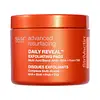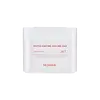What's inside
What's inside
 Key Ingredients
Key Ingredients

 Benefits
Benefits

 Concerns
Concerns

 Ingredients Side-by-side
Ingredients Side-by-side

Water
Skin ConditioningPentylene Glycol
Skin ConditioningGlycolic Acid
BufferingAzelaic Acid
BufferingGlycereth-7 Triacetate
EmollientAlcohol Denat.
AntimicrobialSodium Hydroxide
BufferingPolysorbate 20
EmulsifyingGlycereth-18 Ethylhexanoate
Skin ConditioningDimethyl Isosorbide
SolventDipropylene Glycol
HumectantTranexamic Acid
AstringentCapryloyl Salicylic Acid
ExfoliatingGluconolactone
Skin ConditioningSalix Alba Bark Extract
AstringentMyristyl Nicotinate
Skin ConditioningCitrus Paradisi Fruit Extract
Skin ConditioningCitrus Grandis Peel Oil
MaskingSpiraea Ulmaria Extract
AstringentHydroxymethoxyphenyl Decanone
Skin ConditioningAsiatic Acid
Skin ConditioningMadecassic Acid
Skin ConditioningAdenosine
Skin ConditioningAsiaticoside
AntioxidantEthoxydiglycol
HumectantLactobacillus Ferment
Skin ConditioningGlycerin
HumectantButylene Glycol
HumectantPropanediol
SolventGlycereth-18
HumectantEthylhexylglycerin
Skin ConditioningCalcium Gluconate
HumectantT-Butyl Alcohol
PerfumingCitric Acid
BufferingLimonene
PerfumingSodium Carbonate
BufferingDenatonium Benzoate
MaskingSodium Chloride
MaskingPotassium Sorbate
PreservativeSodium Benzoate
MaskingWater, Pentylene Glycol, Glycolic Acid, Azelaic Acid, Glycereth-7 Triacetate, Alcohol Denat., Sodium Hydroxide, Polysorbate 20, Glycereth-18 Ethylhexanoate, Dimethyl Isosorbide, Dipropylene Glycol, Tranexamic Acid, Capryloyl Salicylic Acid, Gluconolactone, Salix Alba Bark Extract, Myristyl Nicotinate, Citrus Paradisi Fruit Extract, Citrus Grandis Peel Oil, Spiraea Ulmaria Extract, Hydroxymethoxyphenyl Decanone, Asiatic Acid, Madecassic Acid, Adenosine, Asiaticoside, Ethoxydiglycol, Lactobacillus Ferment, Glycerin, Butylene Glycol, Propanediol, Glycereth-18, Ethylhexylglycerin, Calcium Gluconate, T-Butyl Alcohol, Citric Acid, Limonene, Sodium Carbonate, Denatonium Benzoate, Sodium Chloride, Potassium Sorbate, Sodium Benzoate
Water
Skin ConditioningDipropylene Glycol
HumectantGlycerin
HumectantButylene Glycol
Humectant1,2-Hexanediol
Skin ConditioningBetaine Salicylate
AntimicrobialBetaine
HumectantHydroxyacetophenone
AntioxidantTromethamine
BufferingOctyldodeceth-16
EmulsifyingSodium Citrate
BufferingCitric Acid
BufferingDisodium EDTA
Papain
Skin ConditioningPogostemon Cablin Leaf Oil
MaskingJuniperus Virginiana Oil
MaskingCapryloyl Salicylic Acid
ExfoliatingArtemisia Vulgaris Oil
PerfumingBeta-Glucan
Skin ConditioningMentha Arvensis Leaf Oil
MaskingWater, Dipropylene Glycol, Glycerin, Butylene Glycol, 1,2-Hexanediol, Betaine Salicylate, Betaine, Hydroxyacetophenone, Tromethamine, Octyldodeceth-16, Sodium Citrate, Citric Acid, Disodium EDTA, Papain, Pogostemon Cablin Leaf Oil, Juniperus Virginiana Oil, Capryloyl Salicylic Acid, Artemisia Vulgaris Oil, Beta-Glucan, Mentha Arvensis Leaf Oil
 Reviews
Reviews

Ingredients Explained
These ingredients are found in both products.
Ingredients higher up in an ingredient list are typically present in a larger amount.
Butylene Glycol (or BG) is used within cosmetic products for a few different reasons:
Overall, Butylene Glycol is a safe and well-rounded ingredient that works well with other ingredients.
Though this ingredient works well with most skin types, some people with sensitive skin may experience a reaction such as allergic rashes, closed comedones, or itchiness.
Learn more about Butylene GlycolCapryloyl Salicylic Acid comes from salicylic acid, the famous acne-fighting BHA.
It usually goes by a more common name of LHA, or lipohydroxy acid.
Like salicylic acid, this ingredient is a chemical exfoliant that can help break down the oil in your pores and reduce inflammation.
Though studies for LHA do show it to be less effective than salicylic acid. To be fair, salicylic acid is the reigning monarch of acne treatments.
However, a study from 2009 found LHA to be comparable to BPO, making it a good alternative for people with sensitive skin. Another study of 14 patients found a significant decrease in comedones after using LHA.
Another pro of LHA? It is less irritating than salicylic acid due to its large molecule size.
Large molecules cannot penetrate skin as well, so they are gentler on the skin. LHA is much less penetrative than salicylic acid.
An in-vitro study (not done on a living organism) found only 6% of LHA penetrated past the statum corneum compared to 58% of salicylic acid. An in-vivo (done on a living organism) analysis revealed ~17% of LHA was still present in the top layer of skin after 4 days, versus ~9% of salicylic acid.
Interestingly, a study from 2008 found LHA comparable to another famous acid, glycolic acid.
This study found about 10% of LHA is as effective as 20-50% of glycolic acid in treating hyperpigmentation and fine-lines.
Hydroxy acids have been found to stimulate skin protein, lipids, and thermal thickening. This may have anti-aging benefits.
Learn more about Capryloyl Salicylic AcidCitric Acid is an alpha hydroxy acid (AHA) naturally found in citrus fruits like oranges, lemons, and limes.
Like other AHAs, citric acid can exfoliate skin by breaking down the bonds that hold dead skin cells together. This helps reveal smoother and brighter skin underneath.
However, this exfoliating effect only happens at high concentrations (20%) which can be hard to find in cosmetic products.
Due to this, citric acid is usually included in small amounts as a pH adjuster. This helps keep products slightly more acidic and compatible with skin's natural pH.
In skincare formulas, citric acid can:
While it can provide some skin benefits, research shows lactic acid and glycolic acid are generally more effective and less irritating exfoliants.
Most citric acid used in skincare today is made by fermenting sugars (usually from molasses). This synthetic version is identical to the natural citrus form but easier to stabilize and use in formulations.
Read more about some other popular AHA's here:
Learn more about Citric AcidDipropylene Glycol is a synthetically created humectant, stabilizer, and solvent.
This ingredient helps:
Dipropylene glycol is technically an alcohol, but it belongs to the glycol family (often considered part of the ‘good’ alcohols). This means it is hydrating and gentle on skin unlike drying solvent alcohols like denatured alcohol.
As a masking agent, Dipropylene Glycol can be used to cover the smell of other ingredients. However, it does not have a scent.
Studies show Dipropylene Glycol is considered safe to use in skincare.
Learn more about Dipropylene GlycolGlycerin is already naturally found in your skin. It helps moisturize and protect your skin.
A study from 2016 found glycerin to be more effective as a humectant than AHAs and hyaluronic acid.
As a humectant, it helps the skin stay hydrated by pulling moisture to your skin. The low molecular weight of glycerin allows it to pull moisture into the deeper layers of your skin.
Hydrated skin improves your skin barrier; Your skin barrier helps protect against irritants and bacteria.
Glycerin has also been found to have antimicrobial and antiviral properties. Due to these properties, glycerin is often used in wound and burn treatments.
In cosmetics, glycerin is usually derived from plants such as soybean or palm. However, it can also be sourced from animals, such as tallow or animal fat.
This ingredient is organic, colorless, odorless, and non-toxic.
Glycerin is the name for this ingredient in American English. British English uses Glycerol/Glycerine.
Learn more about GlycerinWater. It's the most common cosmetic ingredient of all. You'll usually see it at the top of ingredient lists, meaning that it makes up the largest part of the product.
So why is it so popular? Water most often acts as a solvent - this means that it helps dissolve other ingredients into the formulation.
You'll also recognize water as that liquid we all need to stay alive. If you see this, drink a glass of water. Stay hydrated!
Learn more about Water